Webinar: Move Forward With An Effective Test Automation Strategy [Voices of Community]
Devansh Bhardwaj
Posted On: December 2, 2022
![]() 29206 Views
29206 Views
![]() 7 Min Read
7 Min Read
The key to successful test automation is to focus on tasks that maximize the return on investment (ROI), ensuring that you are automating the right tests and automating them in the right way. This is where test automation strategies come into play.
An effective test automation strategy helps you focus your team’s efforts on those tests most likely to have the greatest return on investment. It will help you decide which tests to automate and which ones to leave manually based on whether the cost of automating them will likely be justified by the value they add.
We’re sure you would have many questions about the importance of having an automation strategy and identifying why you want to do test automation.
But worry not! Our special guest Julia Pottinger, Lead QA Consultant, QualityWorks, has teamed up with Manoj Kumar, VP of Developer Relations at LambdaTest, in yet another episode of Voices of Community to share their tips and to answer your questions on how to move forward with an effective test automation strategy! They have also discussed evaluating and choosing existing automation testing frameworks and tools.
If you missed the power-packed webinar, let us look at the event’s major highlights.

About the Webinar:
The webinar starts with Julia discussing the objectives of the webinar – Defining a test automation strategy and the steps to create a test automation strategy.
Julia defines test automation strategy as the tools and frameworks used to get reusable automated test scripts and how testers can create and maintain those scripts—as per Julia, maintaining automation scripts is extremely important.
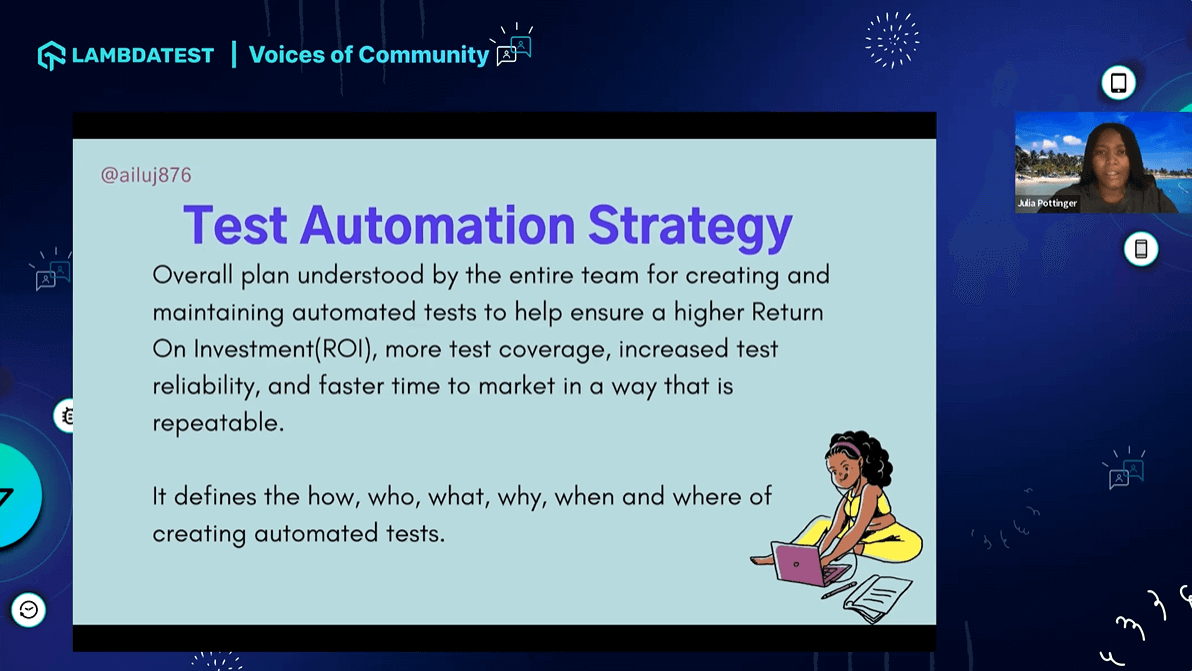
She adds that a test automation strategy is most effective when everyone on your team understands what is going on because they are the ones who will implement the strategy. Hence, it is crucial to have a strategy that your team understands and gets a good return on investment (ROI). She also insists that getting faster time to market and more reliable faster tests will require a lot of time and effort, and it would only be wise to dive into it with a solid test automation strategy.
She also explains that test automation strategy should define the how, what, who, why, when, and where to create automated tests, and that’s what we will dive into with this webinar.
Identifying “Why” to automate
Moving forward, Julia explains the first thing we should do while creating a test automation strategy is identify the “Why” – the goal you are trying to achieve. She insists that as a tester, you should be able to answer the goals you are trying to accomplish with automation testing as you shift from exploratory testing and manual testing to automation testing.
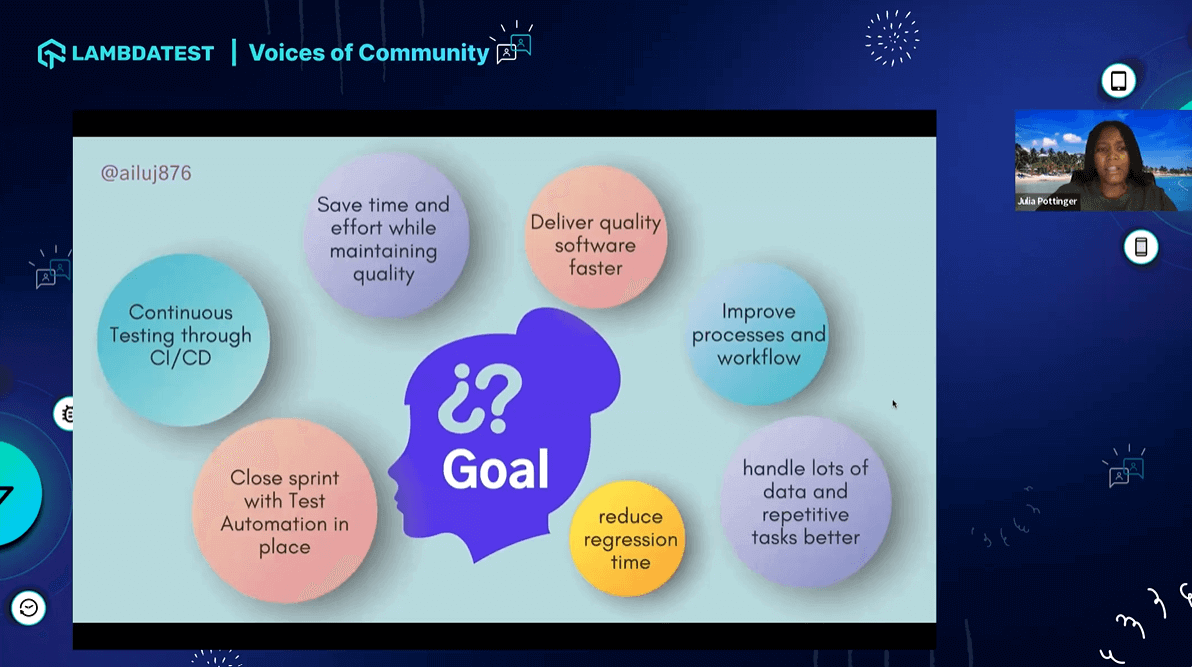
Like many other reasons, Julia adds that you can also use automation testing to generate different user scenarios quickly to have more coverage.
Identifying “Who” is going to automate
Julia adds the second stage after defining your goal is to find “Who is going to execute that goal.” As per Julia, you need a team who would write tests, execute tests, update reports and maintain test cases to ensure that you get the true value. While choosing a dedicated team, Julia insists there should be a mix of junior and senior people rather than a heavy load on a senior technical person. Having a mixed team would help them learn and grow faster.
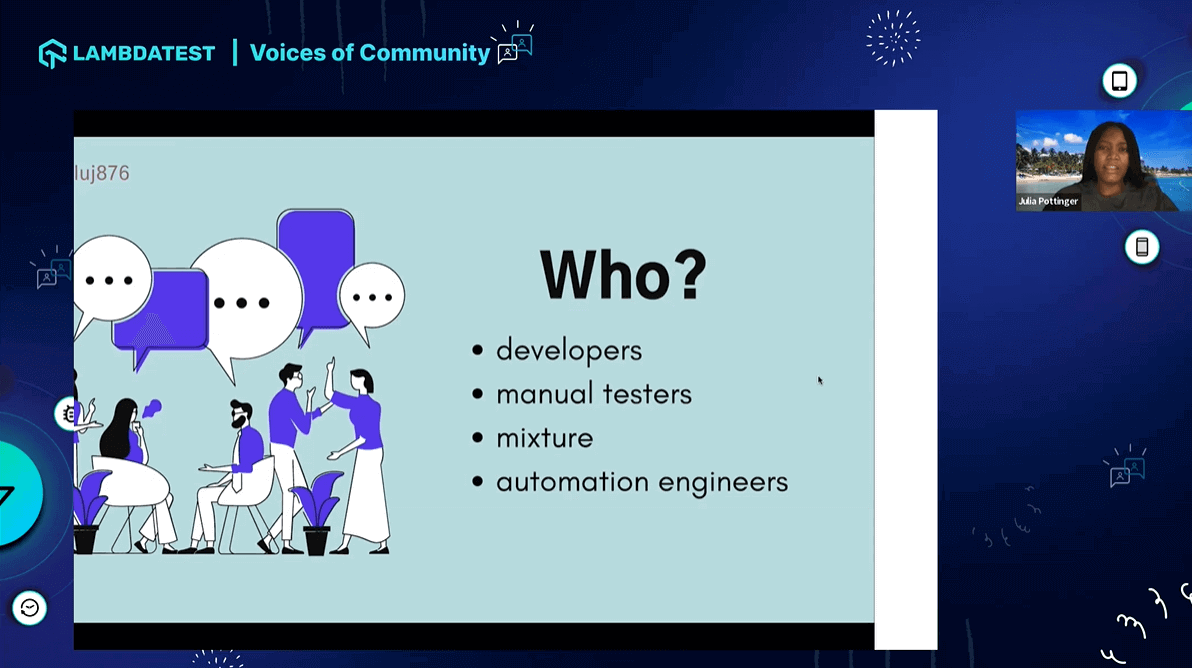
Identifying “What” to automate
The next stage is to figure out, “What type of test are you going to automate?”. Julia adds deciding what to automate allows you to zone in on the key areas that will give you the best return on investment. Identifying the level of testing you wish to automate, such as unit testing, service layers (API testing), or UI testing, is crucial as well.
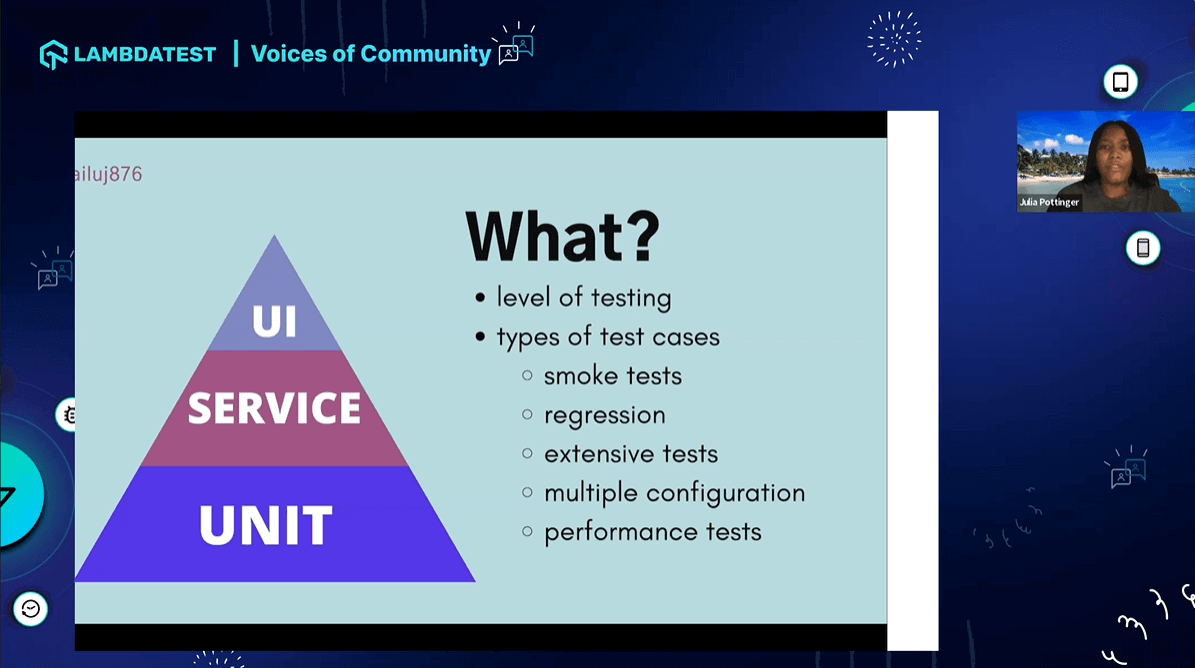
Julia then explains the type of tests she prefers automating, such as smoke testing, regression testing, extensive testing, multiple configurations, and performance testing.
Identifying “How” to automate
The next question you need to address is, “How are you going to automate your tests?”. Julia explains that you need to find a specific tool and a framework that fits your project needs. While deciding which tool you need to use, you must consider the level of testing. The language used by your team to write and execute these tests is also essential.
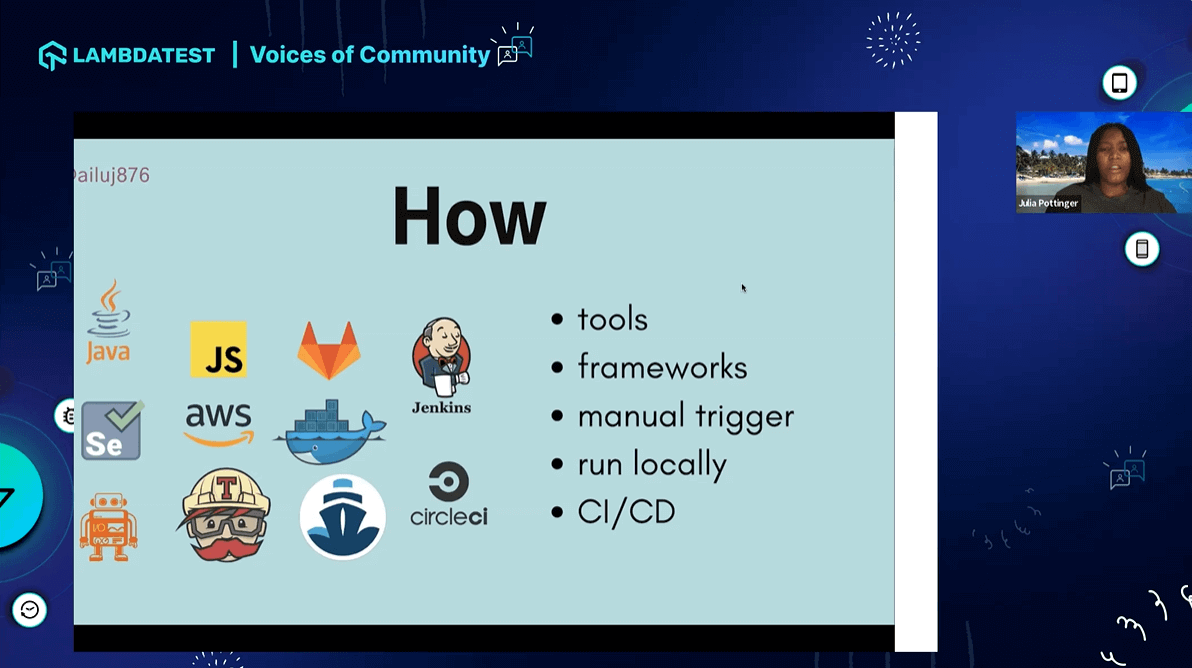
It would be best to consider feasibility factors when choosing automated testing tools. Julia insists on taking time while selecting the tool you want to avoid regretting and wasting time and effort.
Identifying “Where” and “When” to automate
The final stage while implementing a test automation strategy is “Where and When should you run automation tests?”. As per Julia, every team should have a dedicated test environment; if not, it should run inside a dedicated test environment. This is crucial as it allows you to manipulate the data to get different scenarios for testing.
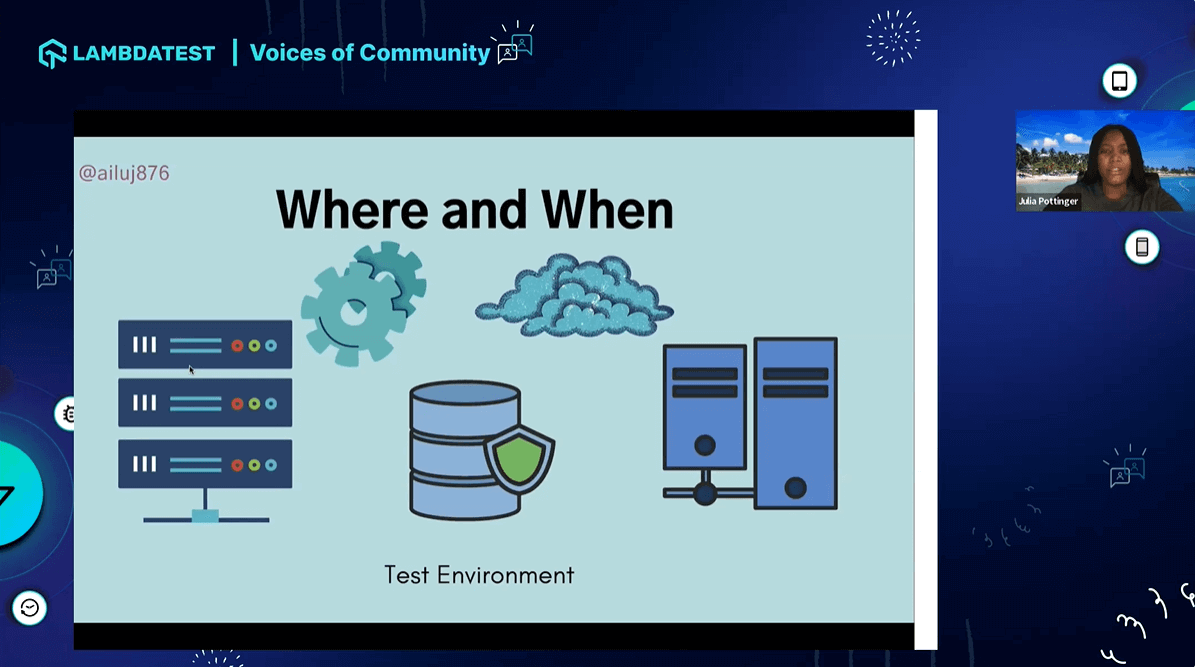
Julia also suggests running automation tests in your production environment after you have tested in your test environment.
Moving forward, Julia explains the test automation strategy template she uses to align test goals with her team.
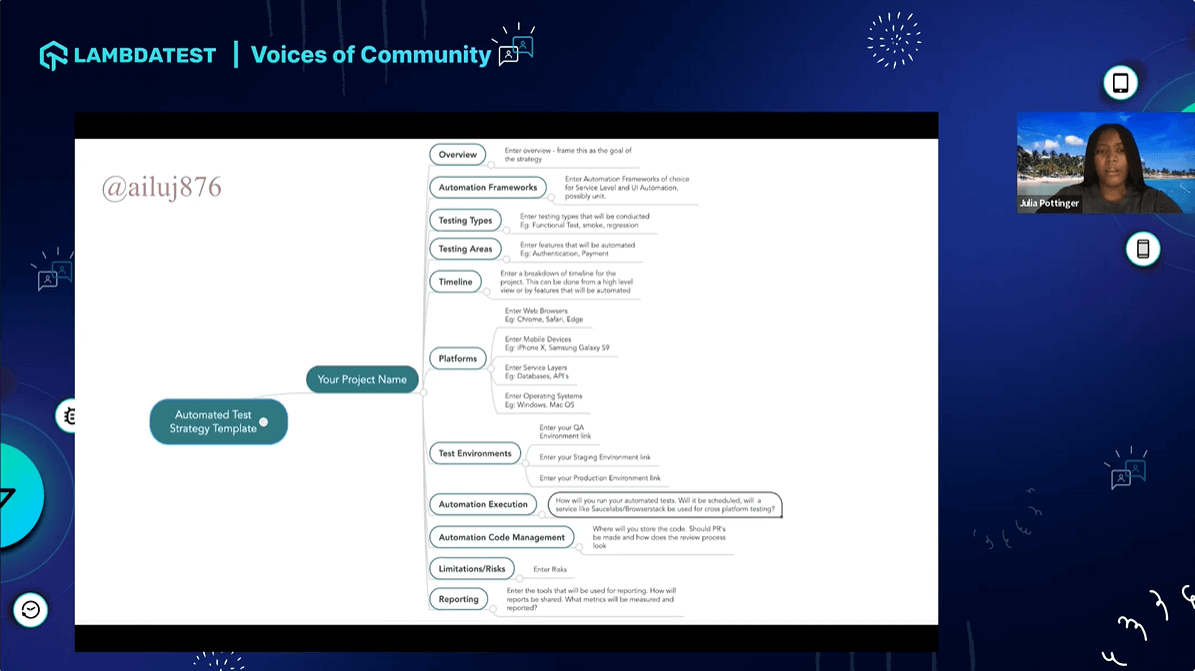
Before diving into the Q&A, Julia briefly recaps the test automation strategy and how to identify different parameters.
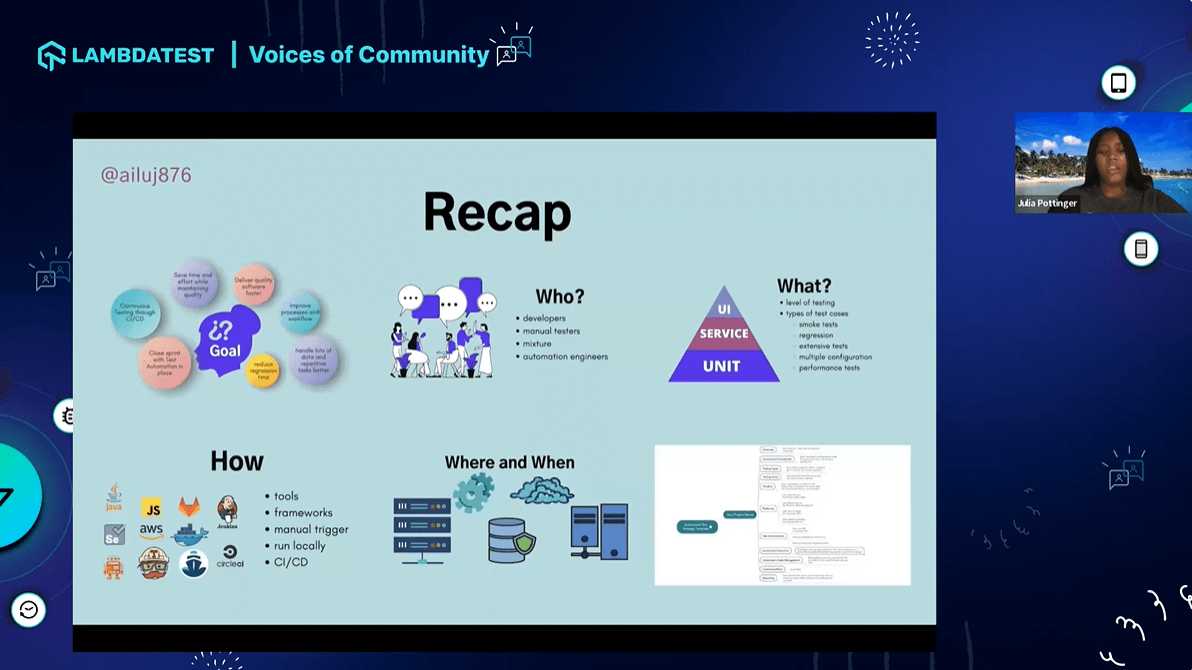
Q&A Session:
Before wrapping up, Julia answered several questions the viewers raised. Here are some of the insightful questions from the session:
- Do you recommend any personas be available during the assessment of the test automation plan on both the vendor and customer sides?
- What are the most common issues that come your way to deliver what you have drafted in your strategy?
- What are the pros and cons of having a separate team that wants to automate the tests versus having automated tests created and maintained by each team?
- I presume that you would have a combination of tests for a project. Which would you prioritize, and what would those tests be – end-to-end, functional, unit, regression, etc.?
Yes, you want people who are familiar with the project. That includes developers, product owners, and manual testers that currently exist. So you need to have that product knowledge and find out the areas where we currently spend a lot of time doing manual testing. You also need to have the management get approvals and budgets. Hence, two types of people need to be there when it comes to the assessment of the test automation plan of the organizations.
After you have created your test strategy and think you will get it done this time and get these features, the project is suddenly no longer focused on them; it becomes less important. In short, the project or features we were automating were now unimportant, and we had to shift our focus to a new project. Another issue we had to learn over the years was the estimation of time because even while planning, you eventually estimate the efforts, the time it will take, and how long it will take us to automate this feature or project. So it is important to understand how much time and pauses it will take while performing these tests.
Both can be good regarding the number of people in the organization. If you have five people, you may want them to be in charge of automating the tests. Based on the number of people you have on your team, you can decide if it would be less overwhelming for them to be split up in that way.
It depends on the goal. If the goal is that I have a lot of regression tests and they are slowing up the process, and I can’t get through them quickly, then that may be my priority. So you have to figure out your goal and prioritize accordingly. Also, regression tests are both functional and end to end tests, so there can be overlap in the grouping.
Hope You Enjoyed The Webinar!
We hope you liked the webinar. In case you missed it, please find the webinar recording above. Make sure to share this webinar with anyone who wants to learn more about moving forward with an effective test automation strategy. Stay tuned for more exciting LambdaTest Webinars. You can also subscribe to our newsletter Coding Jag to stay on top of everything testing and more!
That’s all for now, happy testing!
Got Questions? Drop them on LambdaTest Community. Visit now















